Design for the Coder's Mind: Reverse-Engineering Visual Design
14 likes2,472 views
Guiding principles behind the decisions that visual designers make. Watch a video presentation here: http://www.kadavy.net/blog/posts/design-for-the-coders-mind-reverse-engineering-visual-design/
1 of 14
Downloaded 135 times
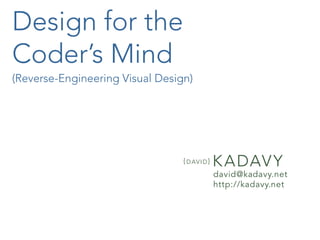
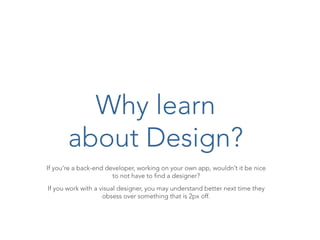
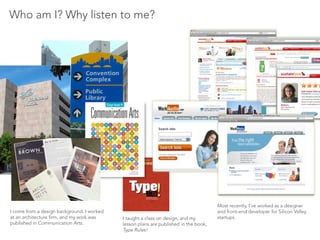
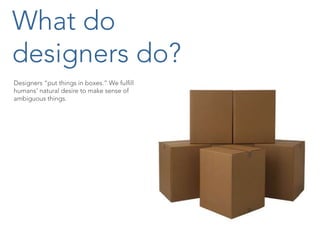
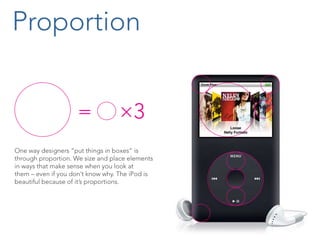
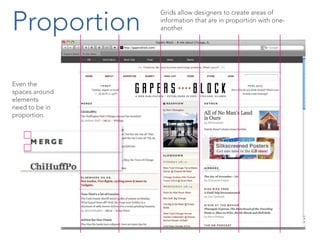
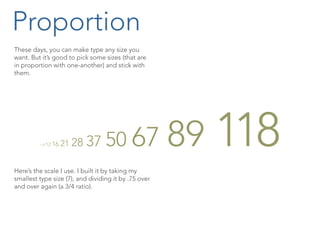
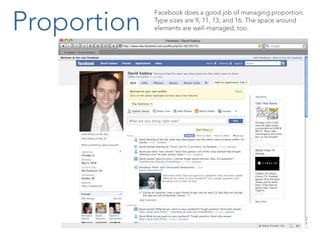
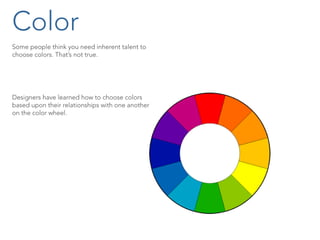
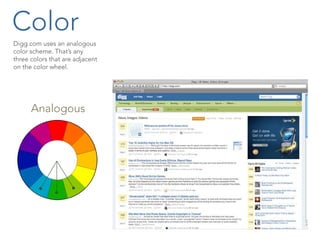



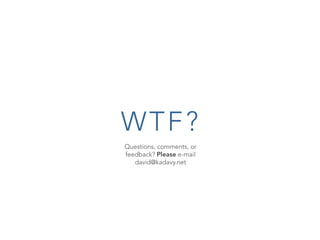
Recommended
Aneudi diaz - Resume



Aneudi diaz - ResumeAneudi Diaz
Ěý
Aneudi Diaz is a graphic designer based in New York City with over 10 years of experience. He received a Bachelor's degree in Communication Design from New York City College of Technology and an Associate's degree in Multimedia Programming and Design from Borough of Manhattan Community College. His previous roles include graphic designer positions at Saatchi & Saatchi, DirecTV Latin America, Acolyte LED Inc., and Music Choice where he designed PowerPoint presentations, templates, layouts, and graphics within tight deadlines.Resume



ResumeJason Wyckoff
Ěý
Jason Wyckoff is seeking an entry-level design position and has a Bachelor's degree in Graphic Design expected in 2014. He has a diploma in Digital Design from 2011 and coursework covering areas like design principles, typography, and digital illustration. Jason has skills in communication, problem-solving, learning new concepts quickly, and transforming static ideas into dynamic digital art. His computer skills include Adobe and Microsoft programs, and he has freelance design experience creating logos, promotional materials, websites, and presentations for local businesses since 2010.Graphic design



Graphic designViperia Lee
Ěý
Graphic design is the creative process of combining images and text to effectively communicate a message through visual design. Designers use digital tools like Adobe Photoshop, Illustrator, and InDesign to combine photos, illustrations, and typography into formats like brochures, books, websites, and other materials for advertising, editorial, and branding purposes.Sergiu Mindru cv & portofolio



Sergiu Mindru cv & portofolioZZTribe
Ěý
Sergiu Mîndru is an Art Director with 17 years of experience in graphic design and advertising. He has worked with brands such as Coca-Cola, UNICEF, Nestle, and others. His skills include developing brand concepts, identities, digital graphics, and campaign presentations. He is proficient in animation principles, motion work, character design, and supervising roles on projects.IGD portfolio



IGD portfolioKennedy Silungwe
Ěý
Kennedy Silungwe is a graphic designer with over 3 years of experience working for a newspaper company, print and branding firm, and advertising agency. He has skills in Adobe Photoshop, Illustrator, InDesign, Dreamweaver, and CorelDraw. His portfolio contains examples of brand identity work, graphics, and print designs created for clients such as KC CHH Entertainment, NAZARITES, and Fosure Music. Contact information is provided for Kennedy via social media links, email, and a thank you for reviewing his work.Mackenzie Thompson Architecture Portfolio



Mackenzie Thompson Architecture Portfolio1157999164
Ěý
This portfolio is for the University of Kent as part of the application process. My UCAS I.D is 1157999164. Get Started With Design Thinking



Get Started With Design ThinkingNikolaj Gandrup Borchorst
Ěý
This document provides an overview of design thinking according to Creuna, a design consultancy. It defines design thinking as "a mindset and process for solving complex problems, ultimately to create value for people in a world where old truths are constantly challenged." The document discusses empathizing with users through ethnographic research, kickstarting prototyping through sketching to explore multiple solutions quickly, and testing prototypes with users. It emphasizes involving users throughout the process and failing early to iterate based on learning. The goal is to scale design thinking approaches for different projects and organizations.portfolio_Karthik C S



portfolio_Karthik C SKarthik C.S
Ěý
The document provides information about the career experiences and skills of a graphic designer. It summarizes their passion for design work and taking on challenges. Key experiences include web design roles at various companies developing websites, branding materials, and multimedia presentations. Additional experience includes compositing work in visual effects for films. Core skills include Photoshop, Illustrator, InDesign, HTML/CSS, motion graphics, and visual effects software.Things designers and developers should know (WDS18)



Things designers and developers should know (WDS18)Ben Buchanan
Ěý
My talk from Web Directions Summit 2018, about things designers and developers should know about each other. If you've ever asked or been asked "should designers code", this talk is for you :)What is Graphic Design?



What is Graphic Design?Jennifer Janviere
Ěý
Graphic design is a creative process that combines art and technology. Designers use visual elements like images, typography, photography and illustration to effectively communicate ideas and messages to an audience. They work with clients to understand the purpose and content of a message, then develop concepts and work with other specialists like illustrators, photographers, printers to create the final graphic design product.mini design portfolio



mini design portfoliodbrunn95
Ěý
This design portfolio showcases work in logo design, print design, and web design created using Adobe software like Illustrator, Photoshop, InDesign, and Dreamweaver. Projects include logos and direct mail pieces, posters and postcards raising awareness of environmental issues, invitation packages, and a website for a historical society. The portfolio is presented by a designer named Deb who thanks visitors for viewing her work.COMPUTER GENERATED ART PORTFOLIO



COMPUTER GENERATED ART PORTFOLIOTaylorh
Ěý
The artist reflects on their most proud work being a logo design that brought together their skills while creating something usable for the customer. They also discuss a portrait project they would redo to make it less sloppy using current skills. Additionally, they see computer generated art having a strong role in their future as it is fun, challenging, and can supplement an illustration career through graphic design and advertising work.DESIGNATION-Program-Roadmap



DESIGNATION-Program-RoadmapAaron Fazulak
Ěý
The document summarizes a 12-week intensive program called DESIGNATION that trains people to become digital designers. The program consists of 6 weeks of online prep work followed by 12 weeks of in-person immersion training covering topics like UX design, front-end development, and UI design. Students then spend their final weeks working on team and individual projects to build their portfolios before receiving post-graduation career support and mentorship from DESIGNATION.Graphic Design Introduction Upload



Graphic Design Introduction UploadNida Aslam
Ěý
A very useful material that will help all the beginners in understanding the basics of graphic designing.Introduction to software design



Introduction to software designTech in Asia
Ěý
What is design, what are the types of software design, and how you can improve design in your startup.Unit 201 - Lesson 5 - Make a Visualisation



Unit 201 - Lesson 5 - Make a VisualisationThe English Martyrs School & Sixth Form College
Ěý
The document discusses creating a visualisation for planning a sci-fi movie. It defines key terms like visualisation, audience, and purpose. The lesson goals are to create an effective visualisation and review it against the client brief. Learners are tasked with sketching character designs from different angles and evaluating how well their visualisation serves its intended purpose.Enrique Allen, D Fund - Warm Gun Conference



Enrique Allen, D Fund - Warm Gun Conference500 Startups
Ěý
The document discusses designer founders in tech. It defines what is meant by design, which goes beyond just visual design to include interface, information architecture, interaction design, functional specifications, content requirements, underlying technology, and user-product-business hypotheses and objectives. It defines what is meant by designer founders, noting they need skills across engineering, design, and business stacks as well as the ability to continuously guide their product and organization through design cycles. Critical assertions made are that differentiated brand and experience design from designer founders will be crucial to short- and long-term success in the crowded consumer tech market, and having a multi-disciplinary designer founder is a competitive advantage.Design Essentials for Developers 08.31.11



Design Essentials for Developers 08.31.11EffectiveUI
Ěý
The document discusses essential design principles for developers to improve understanding, communication and collaboration with designers. It covers design research, interaction design and graphic design. The presentation emphasizes making intent visible through ensuring interactive elements are visible, recognizable, have feedback, and are safe and consistent. It encourages developers to validate their ideas through quick user interviews, and to appreciate good design while avoiding some common mistakes.CIID at Reboot 11 conference



CIID at Reboot 11 conferenceeilidh dickson
Ěý
The CIID students set up an open interaction design lab at the 2-day Reboot conference to act as consultants for any ideas conference participants wanted to share. The lab was located in the center of the venue. This was the first time Reboot tried this open lab approach. The students worked with participants and helped develop ideas that were then displayed and published. The following pages provide a diary of the students' experiences at Reboot 11.Rethinking the Interaction Design Portfolio



Rethinking the Interaction Design PortfolioJoel Califa
Ěý
This document discusses how interaction designers currently use PDF portfolios that do not showcase interactivity, which is counterintuitive. It proposes redesigning the interaction design portfolio to be fully interactive and portray the roles of an interaction designer through visual design, information architecture, usability, copywriting, and delighting the user. The redesigned portfolio would use in-line interactions and mockups to demonstrate projects in their original context while keeping the user on the site. The goal is to correctly showcase interaction design and make the portfolio experience interactive.Aicd presentation



Aicd presentationkathlewis50
Ěý
The document provides guidance on designing an eLearning module for subject matter contributors/writers at the Australian Institute of Company Directors (AICD) who have little background in education. The module will cover fundamental principles of instructional design using a self-paced eLearning format. Learners will engage with content through reading, choosing, describing, reflecting, planning, investigating and inquiring. The module will also provide opportunities for collaborative work and reflective practice during development.Aicd presentation



Aicd presentationkathlewis50
Ěý
The document provides guidance on designing an eLearning module for subject matter contributors/writers at the Australian Institute of Company Directors (AICD) who have little background in education. The module will cover fundamental principles of instructional design using a self-paced eLearning format. Learners will engage with content through reading, choosing, describing, reflecting, planning, investigating and inquiring. The module will also provide opportunities for collaborative work and reflective practice during development.Saurabh Gupta Resume



Saurabh Gupta ResumeSaurabh Gupta
Ěý
Saurabh Gupta is a graphic designer with 8 years of experience working for multinational companies and independently on projects. He has a Master's degree in graphic design and a Bachelor's degree in printing technology. He is currently a visiting lecturer at London Metropolitan University where he mentors students on live projects. Prior work experience includes managing design and creative services at Sodexo, working independently on various projects, and managing design as the creative head at Organic India. He is passionate about using design as a problem-solving tool for sustainable solutions.James capabilities deck



James capabilities deckjimmy542991
Ěý
James Ngara provides a capabilities deck summarizing his experience and skills as a creative professional and marketing designer. Over the past 4 years, he has gained technical problem-solving skills in areas such as digital marketing, technology, communication, and project coordination. He has also gained 2 years of experience in customer service and client success. His capabilities deck includes examples of design work, the programs he is proficient in using, and testimonials praising his strong work ethic and creative solutions.Erick Jurado Resume



Erick Jurado Resumeej23
Ěý
Erick Jurado has over 10 years of experience in graphic design, print production, web design, motion graphics, and video editing. He has worked on projects for companies such as SXC Health Solutions, Pearson Education, Music Direct, Office Max, and Brainworx Studio. His skills include Adobe Creative Suite, HTML, CSS, and ActionScript. He holds a BA in English and Graphic Design from Columbia College Chicago.Why the hell do I need a designer in my project?



Why the hell do I need a designer in my project?KarolinaKrgiel
Ěý
Not sure if your project needs a designer? In this short video, our Business Manager Pawel Mydło answers this question loud and clear with the help of our designers Kamelia Niemczyk and Magdalena Ruta. Watch it to find out:
1. If you really need a designer
2. What exactly designers do
3. What you can expect as a deliverable
Enjoy!AGDA Wo r k e x p e r i e n c e k i t



AGDA Wo r k e x p e r i e n c e k i tshannen.y
Ěý
This resource provides guidelines, design briefs, and assessments to help students gain experience working in a graphic design studio, including understanding a designer's role, learning studio etiquette, and completing sample design briefs for a newspaper masthead and tea bag label at an appropriate skill level.Portfolio draft



Portfolio draftneileverette
Ěý
Neil Everette led the product design for Red Hat Marketplace, which aimed to create a software store where developers could discover, purchase, and deploy applications to any cloud with just a few clicks. Everette created an initial story map and wireframes to plan the user experience. He then worked with partners to develop a product demo for IBM leadership that secured approval and funding for the project. The marketplace aimed to help IBM compete in the multi-cloud market by enabling applications to be built once and deployed anywhere.Design Essentials for Developers



Design Essentials for DevelopersEffectiveUI
Ěý
To help designers communicate more effectively with each other and provide a vocabulary for clear and productive UX feedback.Test2



Test2mgross07
Ěý
Marielle Gross is a graphic designer based in New York City. She received a BFA in Graphic Design from the School of Visual Arts in 2008, graduating in the top 10 of her class. She has worked as a freelance graphic designer for several companies, including NiCE Ltd., David Mashburn Design, and AVEC. She also worked as a graphic designer at Addison from 2008 to 2009, where she led the design of annual reports for nonprofit organizations.More Related Content
What's hot (8)
Things designers and developers should know (WDS18)



Things designers and developers should know (WDS18)Ben Buchanan
Ěý
My talk from Web Directions Summit 2018, about things designers and developers should know about each other. If you've ever asked or been asked "should designers code", this talk is for you :)What is Graphic Design?



What is Graphic Design?Jennifer Janviere
Ěý
Graphic design is a creative process that combines art and technology. Designers use visual elements like images, typography, photography and illustration to effectively communicate ideas and messages to an audience. They work with clients to understand the purpose and content of a message, then develop concepts and work with other specialists like illustrators, photographers, printers to create the final graphic design product.mini design portfolio



mini design portfoliodbrunn95
Ěý
This design portfolio showcases work in logo design, print design, and web design created using Adobe software like Illustrator, Photoshop, InDesign, and Dreamweaver. Projects include logos and direct mail pieces, posters and postcards raising awareness of environmental issues, invitation packages, and a website for a historical society. The portfolio is presented by a designer named Deb who thanks visitors for viewing her work.COMPUTER GENERATED ART PORTFOLIO



COMPUTER GENERATED ART PORTFOLIOTaylorh
Ěý
The artist reflects on their most proud work being a logo design that brought together their skills while creating something usable for the customer. They also discuss a portrait project they would redo to make it less sloppy using current skills. Additionally, they see computer generated art having a strong role in their future as it is fun, challenging, and can supplement an illustration career through graphic design and advertising work.DESIGNATION-Program-Roadmap



DESIGNATION-Program-RoadmapAaron Fazulak
Ěý
The document summarizes a 12-week intensive program called DESIGNATION that trains people to become digital designers. The program consists of 6 weeks of online prep work followed by 12 weeks of in-person immersion training covering topics like UX design, front-end development, and UI design. Students then spend their final weeks working on team and individual projects to build their portfolios before receiving post-graduation career support and mentorship from DESIGNATION.Graphic Design Introduction Upload



Graphic Design Introduction UploadNida Aslam
Ěý
A very useful material that will help all the beginners in understanding the basics of graphic designing.Introduction to software design



Introduction to software designTech in Asia
Ěý
What is design, what are the types of software design, and how you can improve design in your startup.Unit 201 - Lesson 5 - Make a Visualisation



Unit 201 - Lesson 5 - Make a VisualisationThe English Martyrs School & Sixth Form College
Ěý
The document discusses creating a visualisation for planning a sci-fi movie. It defines key terms like visualisation, audience, and purpose. The lesson goals are to create an effective visualisation and review it against the client brief. Learners are tasked with sketching character designs from different angles and evaluating how well their visualisation serves its intended purpose.Similar to Design for the Coder's Mind: Reverse-Engineering Visual Design (20)
Enrique Allen, D Fund - Warm Gun Conference



Enrique Allen, D Fund - Warm Gun Conference500 Startups
Ěý
The document discusses designer founders in tech. It defines what is meant by design, which goes beyond just visual design to include interface, information architecture, interaction design, functional specifications, content requirements, underlying technology, and user-product-business hypotheses and objectives. It defines what is meant by designer founders, noting they need skills across engineering, design, and business stacks as well as the ability to continuously guide their product and organization through design cycles. Critical assertions made are that differentiated brand and experience design from designer founders will be crucial to short- and long-term success in the crowded consumer tech market, and having a multi-disciplinary designer founder is a competitive advantage.Design Essentials for Developers 08.31.11



Design Essentials for Developers 08.31.11EffectiveUI
Ěý
The document discusses essential design principles for developers to improve understanding, communication and collaboration with designers. It covers design research, interaction design and graphic design. The presentation emphasizes making intent visible through ensuring interactive elements are visible, recognizable, have feedback, and are safe and consistent. It encourages developers to validate their ideas through quick user interviews, and to appreciate good design while avoiding some common mistakes.CIID at Reboot 11 conference



CIID at Reboot 11 conferenceeilidh dickson
Ěý
The CIID students set up an open interaction design lab at the 2-day Reboot conference to act as consultants for any ideas conference participants wanted to share. The lab was located in the center of the venue. This was the first time Reboot tried this open lab approach. The students worked with participants and helped develop ideas that were then displayed and published. The following pages provide a diary of the students' experiences at Reboot 11.Rethinking the Interaction Design Portfolio



Rethinking the Interaction Design PortfolioJoel Califa
Ěý
This document discusses how interaction designers currently use PDF portfolios that do not showcase interactivity, which is counterintuitive. It proposes redesigning the interaction design portfolio to be fully interactive and portray the roles of an interaction designer through visual design, information architecture, usability, copywriting, and delighting the user. The redesigned portfolio would use in-line interactions and mockups to demonstrate projects in their original context while keeping the user on the site. The goal is to correctly showcase interaction design and make the portfolio experience interactive.Aicd presentation



Aicd presentationkathlewis50
Ěý
The document provides guidance on designing an eLearning module for subject matter contributors/writers at the Australian Institute of Company Directors (AICD) who have little background in education. The module will cover fundamental principles of instructional design using a self-paced eLearning format. Learners will engage with content through reading, choosing, describing, reflecting, planning, investigating and inquiring. The module will also provide opportunities for collaborative work and reflective practice during development.Aicd presentation



Aicd presentationkathlewis50
Ěý
The document provides guidance on designing an eLearning module for subject matter contributors/writers at the Australian Institute of Company Directors (AICD) who have little background in education. The module will cover fundamental principles of instructional design using a self-paced eLearning format. Learners will engage with content through reading, choosing, describing, reflecting, planning, investigating and inquiring. The module will also provide opportunities for collaborative work and reflective practice during development.Saurabh Gupta Resume



Saurabh Gupta ResumeSaurabh Gupta
Ěý
Saurabh Gupta is a graphic designer with 8 years of experience working for multinational companies and independently on projects. He has a Master's degree in graphic design and a Bachelor's degree in printing technology. He is currently a visiting lecturer at London Metropolitan University where he mentors students on live projects. Prior work experience includes managing design and creative services at Sodexo, working independently on various projects, and managing design as the creative head at Organic India. He is passionate about using design as a problem-solving tool for sustainable solutions.James capabilities deck



James capabilities deckjimmy542991
Ěý
James Ngara provides a capabilities deck summarizing his experience and skills as a creative professional and marketing designer. Over the past 4 years, he has gained technical problem-solving skills in areas such as digital marketing, technology, communication, and project coordination. He has also gained 2 years of experience in customer service and client success. His capabilities deck includes examples of design work, the programs he is proficient in using, and testimonials praising his strong work ethic and creative solutions.Erick Jurado Resume



Erick Jurado Resumeej23
Ěý
Erick Jurado has over 10 years of experience in graphic design, print production, web design, motion graphics, and video editing. He has worked on projects for companies such as SXC Health Solutions, Pearson Education, Music Direct, Office Max, and Brainworx Studio. His skills include Adobe Creative Suite, HTML, CSS, and ActionScript. He holds a BA in English and Graphic Design from Columbia College Chicago.Why the hell do I need a designer in my project?



Why the hell do I need a designer in my project?KarolinaKrgiel
Ěý
Not sure if your project needs a designer? In this short video, our Business Manager Pawel Mydło answers this question loud and clear with the help of our designers Kamelia Niemczyk and Magdalena Ruta. Watch it to find out:
1. If you really need a designer
2. What exactly designers do
3. What you can expect as a deliverable
Enjoy!AGDA Wo r k e x p e r i e n c e k i t



AGDA Wo r k e x p e r i e n c e k i tshannen.y
Ěý
This resource provides guidelines, design briefs, and assessments to help students gain experience working in a graphic design studio, including understanding a designer's role, learning studio etiquette, and completing sample design briefs for a newspaper masthead and tea bag label at an appropriate skill level.Portfolio draft



Portfolio draftneileverette
Ěý
Neil Everette led the product design for Red Hat Marketplace, which aimed to create a software store where developers could discover, purchase, and deploy applications to any cloud with just a few clicks. Everette created an initial story map and wireframes to plan the user experience. He then worked with partners to develop a product demo for IBM leadership that secured approval and funding for the project. The marketplace aimed to help IBM compete in the multi-cloud market by enabling applications to be built once and deployed anywhere.Design Essentials for Developers



Design Essentials for DevelopersEffectiveUI
Ěý
To help designers communicate more effectively with each other and provide a vocabulary for clear and productive UX feedback.Test2



Test2mgross07
Ěý
Marielle Gross is a graphic designer based in New York City. She received a BFA in Graphic Design from the School of Visual Arts in 2008, graduating in the top 10 of her class. She has worked as a freelance graphic designer for several companies, including NiCE Ltd., David Mashburn Design, and AVEC. She also worked as a graphic designer at Addison from 2008 to 2009, where she led the design of annual reports for nonprofit organizations.Startups • Working with designers



Startups • Working with designerseFounders
Ěý
When building a startup, designer needs prove to be at the same time indispensable, urgent, and often, a pain in the a**. From our experience of choosing between outsourcing and in-house designers and handling a designer teams on a daily basis, we came up with these advice to help you work in a creative and peaceful atmosphere. Enjoy!
These slides were originally created by Alex Delivet (@alexd) for a presentation at BlendWeb in France.Architect is an Enabling Orchestra Leader



Architect is an Enabling Orchestra LeaderBusiness901
Ěý
An Architect is an enabling orchestra leader not a distant composer. This is a transcription of a Business901 Podcast.
The tag line was part of a twitter exchange with @ingvald thanks!Mood Board Creator for Wedding Planning Institutions



Mood Board Creator for Wedding Planning InstitutionsSampleBoard
Ěý
The document describes SampleBoard, cloud-based concept creation software that allows professionals to create digital mood boards and visual concepts online. Some key points:
- It provides an alternative to PowerPoint or Photoshop for visual concept creation that does not require downloads or expensive software.
- Users can access SampleBoard from anywhere via the cloud to collaborate remotely.
- Features include drag and drop tools, color palettes, importing/uploading images, and exporting/sharing boards.
- It offers cost and time savings compared to traditional desktop software through a subscription model without upgrades, reduced IT overhead, and cloud-based storage and backups.Ux professionalism



Ux professionalismAndy Budd
Ěý
We’re seeing a potential devaluation of the term UX as lots of inexperienced designers and developers make the slow (and often incomplete) move into user experience.
Looking at how crafts transform into professions by charting the history of Architecture, Andy will explain what the discipline really is, how it evolved, and the skills you need to call yourself a user experience designer.
Andy will outline 10 key traits of a user experience professional and argue that we need to evolve in order to face the challenges ahead. He will also state that user experience doesn't just belong to one role, but is everybody's responsibility. So you don't have to switch careers and become a UX designer in order to influence a product's experience.Resume 2011



Resume 2011Cathan Murray
Ěý
This is an interactive PDF of my resume and portfolio. Images link to my website: www.murraycreative.meWeb Design



Web Designmisterel
Ěý
The document outlines the typical steps in a web design process: 1) Conducting research including interviewing the client, researching the industry and competitors, and reviewing successful web designs; 2) Designing and conceptualizing concepts based on the research; 3) Getting feedback and making revisions; 4) Presenting the final design to the client; and 5) Evaluating the process and end result.Recently uploaded (20)
Applications-of-Architectural-Bonded-3D-Surfaces.112024 (1).pdf



Applications-of-Architectural-Bonded-3D-Surfaces.112024 (1).pdfRafeequePonarery2
Ěý
Applications-of-Architectural-Bonded-3D-SurfacesOLADIMEJI FAKOREDE DESIGN REALISATION REPORT.pdf



OLADIMEJI FAKOREDE DESIGN REALISATION REPORT.pdfDimejiFakorede
Ěý
A detailed technical report of my 1st year Masters in Architecture design brief. The design is an air rights photonics building which sits over the existing Nine Elms station, Battersea. Hope you enjoy it !0th review batch ARDUINO COMPILERARDUINO COMPILERARDUINO COMPILERARDUINO COMP...



0th review batch ARDUINO COMPILERARDUINO COMPILERARDUINO COMPILERARDUINO COMP...deenaxxx555
Ěý
Krishnasamy college Wondershare Filmora Crack Version 2025??



Wondershare Filmora Crack Version 2025??Designer
Ěý
Direct file Link Below 👇
https://alpha-community.pro/mh/
Wondershare Filmora (formerly Wondershare Video Editor) is a user-friendly video editing software designed for beginners and intermediate users who want to create professional-quality videos without a steep learning curve. It offers a wide range of editing tools, effects, and templates, making it ideal for content creators, vloggers, marketers, and social media enthusiasts. Filmora is available for both Windows and macOS.
https://alpha-community.pro/mh/Promoting Sustainable Development of Hill Areas --Issues and Options



Promoting Sustainable Development of Hill Areas --Issues and OptionsJIT KUMAR GUPTA
Ěý
Managing and Rationalising India’s Hill Areas Growth and Development ; Hill areas are known to be different and distinct from plain areas of any country, because of its unique diversity, physiography, structure, topography, morphology, flora, fauna, herbs, fruits, vegetation, bio-diversity, climate, culture, heritage, fragility, vulnerability, nature, natural resource, views, quality of life, lakes, glaciers, mobility, infrastructure, built structures etc. Occupying 17% geographical areas and housing 11% national population, hill areas occupy unique space and importance in the growth story of India, as a nation.
Despite distinct character, role , relevance and importance of rational planned development of hill areas, its overall / integrated development and management has been marginalized. With priority and resources going to the plain areas of the country, hill areas are being subjected to large unplanned, irrational and sub-standard growth and development. Accordingly, hill areas are fast becoming hotbeds of vulnerability, both natural and manmade, facing large number of challenges in terms of earthquakes, landslides and flooding, leading to massive loss of human life, animals, infrastructure, built environment and property. Current scenario of irrational, unplanned and haphazard development in hill areas can be, primarily and essentially, attributed to the absence of adequately trained manpower in the art and science of planning, development and management of the hill areas and giving low priority to rationalising development of hill areas. Having special and specific features, hill areas pose different/unique challenges in planning and development and accordingly need different skill-sets, understanding, expertise and approach to its planning and development. Unfortunately, despite having large area and housing large population, no institution in the country offers specialized course in the planning, development , construction and management of hill areas. It is time for Government of India and hill states of India, to ask all IITs/Nits/SPAs and other private universities, located in the hill states to run dedicate specialized courses for the planning, development and management of hill areas. In addition, Government of India, must enact a law and Constitute a High Powered National, Hill Area Planning and Development Authority , on the pattern of NCR Delhi , comprising of representatives of Government of India, hill states and experts from the related fields, under the overall Chairmanship of Minister-in Charge Hill States with Ministers of hill states, Chief Secretaries of Hill States as members , to define the agenda and roadmap for the integrated growth and development of hill states of the country. The Authority should be mandated to prepare the Regional plan of the entire Himalayan Region and provide framework for the states to draw its own Regional Plan. This would help in not only ensuring integrated growthDaVinci Resolve Studio 20.0.0.23 Crack + Activation Key [2025]![DaVinci Resolve Studio 20.0.0.23 Crack + Activation Key [2025]](https://cdn.slidesharecdn.com/ss_thumbnails/avtpastoralvisits20252026-250407114051-0c8f0fbf-250407123835-a3322f2f-thumbnail.jpg?width=560&fit=bounds)
![DaVinci Resolve Studio 20.0.0.23 Crack + Activation Key [2025]](https://cdn.slidesharecdn.com/ss_thumbnails/avtpastoralvisits20252026-250407114051-0c8f0fbf-250407123835-a3322f2f-thumbnail.jpg?width=560&fit=bounds)
![DaVinci Resolve Studio 20.0.0.23 Crack + Activation Key [2025]](https://cdn.slidesharecdn.com/ss_thumbnails/avtpastoralvisits20252026-250407114051-0c8f0fbf-250407123835-a3322f2f-thumbnail.jpg?width=560&fit=bounds)
![DaVinci Resolve Studio 20.0.0.23 Crack + Activation Key [2025]](https://cdn.slidesharecdn.com/ss_thumbnails/avtpastoralvisits20252026-250407114051-0c8f0fbf-250407123835-a3322f2f-thumbnail.jpg?width=560&fit=bounds)
DaVinci Resolve Studio 20.0.0.23 Crack + Activation Key [2025]muhaamadalhan
Ěý
https://up-community.net/after-verification-click-go-to-download-page/
Blackmagic Design DaVinci Resolve Studio Crack is the world’s first solution that combines professional offline and online editing, color correction, audio post-production, and visual effects.Food delivery services and management.pdf



Food delivery services and management.pdfvasanthselvaraj19200
Ěý
UIUX food delivery services project complete report image compressions for development of image



image compressions for development of imageyhalemayalu
Ěý
image compression this is use to minimize the image storage Download Adobe After Effects Crack Latest Version [Updated]![Download Adobe After Effects Crack Latest Version [Updated]](https://cdn.slidesharecdn.com/ss_thumbnails/avtpastoralvisits20252026-250407114051-0c8f0fbf-250407122758-f44f6bbd-thumbnail.jpg?width=560&fit=bounds)
![Download Adobe After Effects Crack Latest Version [Updated]](https://cdn.slidesharecdn.com/ss_thumbnails/avtpastoralvisits20252026-250407114051-0c8f0fbf-250407122758-f44f6bbd-thumbnail.jpg?width=560&fit=bounds)
![Download Adobe After Effects Crack Latest Version [Updated]](https://cdn.slidesharecdn.com/ss_thumbnails/avtpastoralvisits20252026-250407114051-0c8f0fbf-250407122758-f44f6bbd-thumbnail.jpg?width=560&fit=bounds)
![Download Adobe After Effects Crack Latest Version [Updated]](https://cdn.slidesharecdn.com/ss_thumbnails/avtpastoralvisits20252026-250407114051-0c8f0fbf-250407122758-f44f6bbd-thumbnail.jpg?width=560&fit=bounds)
Download Adobe After Effects Crack Latest Version [Updated]muhaamadalhan
Ěý
https://up-community.net/after-verification-click-go-to-download-page/
Adobe After Effects is a powerful motion graphics and visual effects software used to create stunning animations. Gears, their types description and pictures.pptx



Gears, their types description and pictures.pptxkmfprepclub
Ěý
This presentation explains different types of gear and their types, uses and applications in detail.,The AI Experience Playbook from GitLab (2025-03-24 @ LisboaUX)



The AI Experience Playbook from GitLab (2025-03-24 @ LisboaUX)Pedro Moreira da Silva
Ěý
​Learn about GitLab’s playbook to craft AI experiences with real examples. From how AI fits with user needs, through key design methods, to measuring success. What has worked well for us so far, in this growing world of experiences with AI.
đź“ş Video: TBA
đź”— Links below â–Ľ
Event: LisboaUX #3
Date: 2025-03-24
đź”— Links
• GitLab: https://about.gitlab.com/
• Designing for AI: https://handbook.gitlab.com/handbook/product/ux/product-designer/ai-design/
• Research for AI: https://handbook.gitlab.com/handbook/product/ux/ux-research/research-in-the-ai-space
• AI-human interaction guidelines: https://design.gitlab.com/usability/ai-human-interaction/
• Google People + AI Guidebook: https://pair.withgoogle.com/guidebook/
• Interaction Design Policies: https://medium.com/people-ai-research/interaction-design-policies-design-for-the-opportunity-not-just-the-task-239e7f294b29
• Worksheet: https://github.com/PAIR-code/pair-code.github.io/blob/master/Blog/%5BMedium%5D%20Interaction%20Design%20Policies%20Worksheet.pdf
• “A model for types and levels of human interaction with automation”: https://www.semanticscholar.org/paper/A-model-for-types-and-levels-of-human-interaction-Parasuraman-Sheridan/14ae6f2231e09e226b99002aa04b5c70f3c59f2b
• Microsoft HAX Toolkit: https://www.microsoft.com/en-us/haxtoolkit/
• Shape of AI: https://www.shapeof.ai/
• SAP Designing for Generative AI: https://experience.sap.com/fiori-design-web/generative-ai-design/
• IBM Carbon for AI: https://carbondesignsystem.com/guidelines/carbon-for-ai/
• Pedro Moreira da Silva: http://pedroms.com
• X: https://x.com/PedroMScom
• LinkedIn: https://www.linkedin.com/in/pedromoreiradasilva








